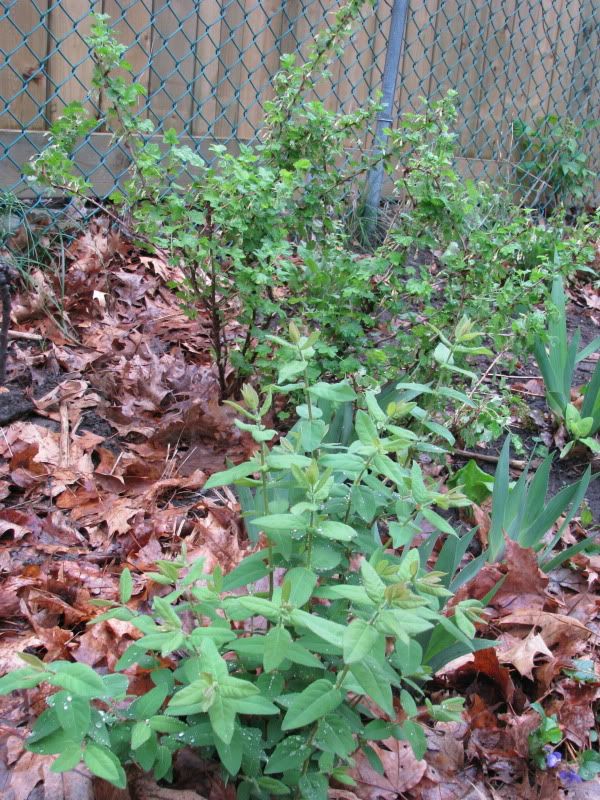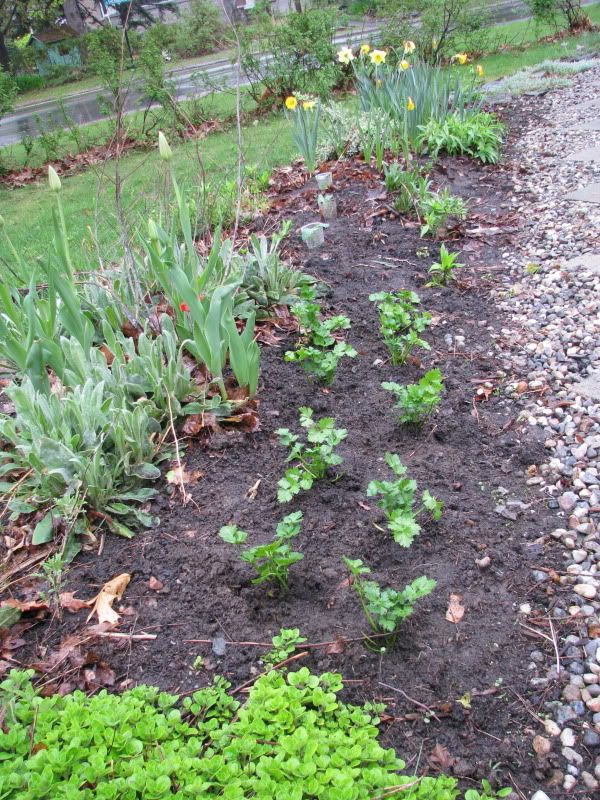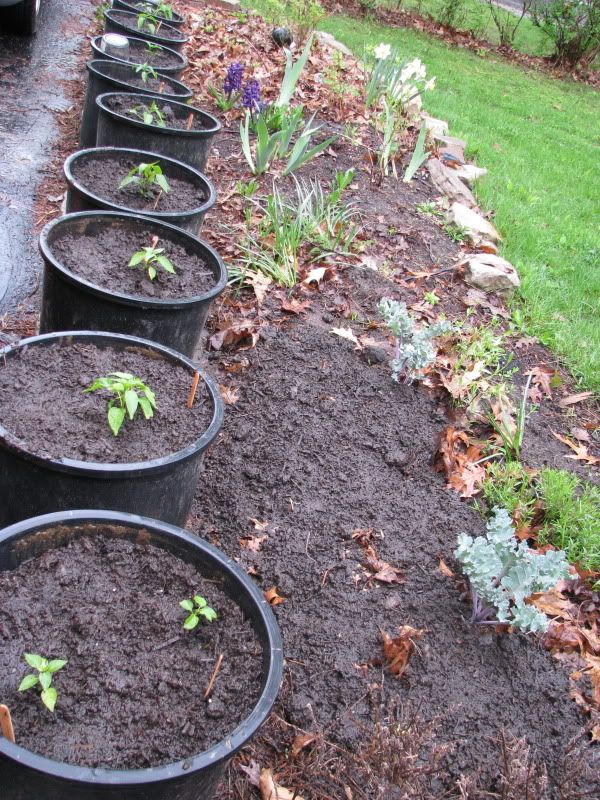Callrihoe involucrata aka Poppy Mallow: A plant for a hot spot, you can eat the leaves, flowers and root which is supposed to taste like sweet potatoes. I bought a single plant and am trying to germinate some seeds - trying, very trying. I'll need lots of plants if I plan on tasting this root.
Crambe maritima aka Seakale: A perennial brassica relative traditionally used as a blanched shoot in the spring but the coarse leaves and flowerbuds are edible too. I bought a couple with purplish leaves but my two 'Lily White,' with green leaves, finally showed their heads. I've also seeded Crambe cordifolia from a kind seed giver in Europe though I'm not sure of its palatability.

Seakale
Rumex sanguineus aka Bloody dock: Yet another carrier of oxalic acid, more commonly known as 'spinach substitutes.' I wanted this one because it is a short plant with rough textured red veined leaves suitable for edging.
Tradescantia virginiana aka Spiderwort: I evicted my Mountain Bluet for this plant which besides being native is supposed to have edible leaves. We shall see...
Borage officinalis aka Borage: The spiderwort is sharing its spot with Borage. I have a thing for blue flowered plants. It's supposed to taste reminescent of cucumbers. I also have salad burnet - another 'cucumber' leaf plant but I've yet to taste the cuke in it.
Opuntia aka Prickly Pear Cactus: My 3 year old daughter was very excited to see that I had kicked out 'The Pearl' Yarrow in favour of this plant. So excited that after saying 'Look, a cactus, look, look,' she ripped it out of the ground and carried it to us to have a better look. I'm not sure if I will ever try to eat the fruits but I wanted to know how it grows and I, like my daughter, think it's fun to grow a cactus outside in the north.
Allium tricoccum aka Ramps: At a local plant sale, I had this discussion:
'Is this plant labelled Wild Garlic Allium tricoccum'
Plant seller: 'I don't do latin.'
'I know what you mean, just happen to know this one. It's useful when you're talking internationally. (Trust me, I really can't rattle off the latin names most of the time unless of course I'm totally obsessed in finding a plant like this one). Is it the wild leek?'
Plant seller: 'You're not supposed to pick it. This comes from our property.'
'Oh yeah, it's Allium tricoccum then. I'll be happy to set up a new colony on my property for the purposes of protecting it.'
Plant seller (has his latin sheild up): 'Yeah, my wife does the latin.'
Physalis heterophylla aka Clammy Ground Cherry: The most exciting find of all - the perennial ground cherry. La la la la, happy day. At the above plant sale, I asked if she had any of that self seeding ground cherry she wrote about.
Plant seller: 'Don't know if it's come up yet. Oh, yeah here it is.'
'Those look like perennial shoots.'
Plant seller: 'Yes, it's perennial.'
'It's edible right, sweet?'
Plant seller: 'Yes, quite good.'

Ground cherry in the clay pot looking a bit like it's evil cousin Chinese Latin. This one is fuzzy.
I look closer, OMG, it's clammy ground cherry. For those in the know, I'm getting excited over a weed but I have wanted to try this plant for some time now. Must stop hyperventilating.
Prunus tomentosa aka Nanking Cherry: Cute, fruiting shrub which I understand I have to wrestle away from the birds.
The Ribes clan aka More gooseberries, josta berry, currants white and red: A very generous fellow edible plant enthusiast at The Green Igloo blog gave me several gooseberry and currant bushes to add to my burgeoning collection. My kids love these tart little fruits that rarely make it past the threshold of our house but are eaten out of hand in the garden. She also gave me some raspberries which are Rubus if you're latin shield is down.
Fruiting Honeysuckle / Honeyberry: A plant with a reviews ranging from 'bumper' to 'bummer.' After reading the hype on DNA gardens, I figured I would try it myself.

Honeyberry front and centre with a Ribes bush, maybe currant, behind it.


